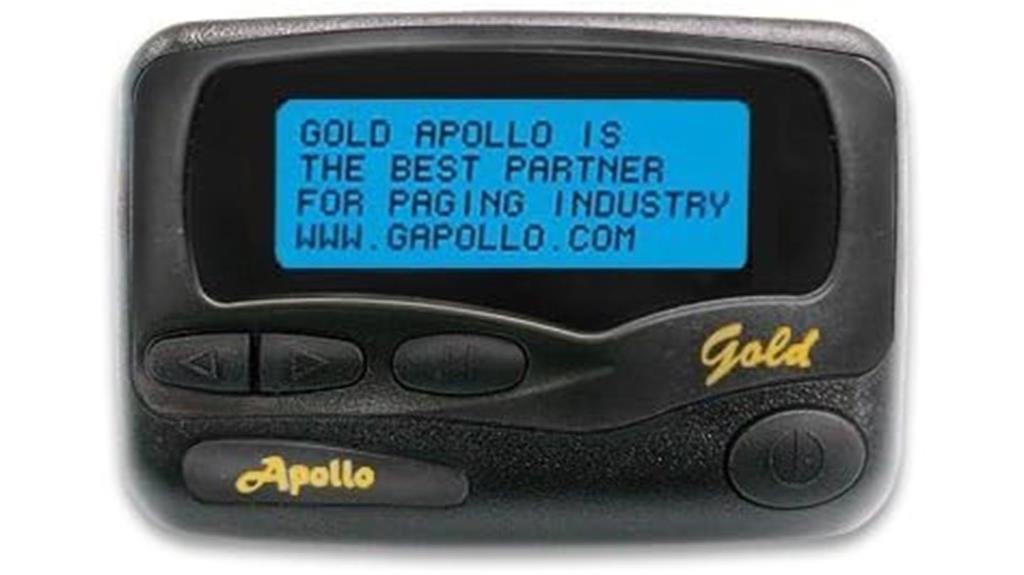When I first came across the Apollo Programmable Alpha Pager AL–A25, I was intrigued by its promise of reliable communication in essential settings. Its large display and customizable alerts caught my attention, but I wanted to see how it actually performed in real-life scenarios. There are pros and cons to evaluate, especially when comparing it to other options. Let’s explore what makes this pager stand out—or not.
Key Specifications and Features
The Apollo Programmable Alpha Pager AL–A25 boasts an impressive array of specifications and features that make it stand out in the market.
Its pocket size makes it convenient to carry, while the blue back-light and large screen display 84 alphanumeric characters across four lines.
I love the 16 memory slots, allowing for substantial message storage.
It offers four beep alerts and ten melody alerts, plus a vibration mode for discretion.
With selective programming and support for multiple languages, it’s user-friendly.
The long-lasting AA battery adds to its practicality, making the AL–A25 a reliable choice for everyday communication needs.
User Experience and Feedback
Many users have shared their experiences with the Apollo Programmable Alpha Pager AL–A25, revealing a mix of satisfaction and challenges.
I’ve noticed that while some appreciate its simplicity and sturdy design, others voice concerns about activation frequency and the need for reliable service.
Users in nursing homes seem to find it particularly useful, but I’ve also read about frustrations regarding its limitations and durability.
The general feedback indicates that this pager excels in straightforward situations, yet potential buyers might want to reflect on their specific needs, especially regarding frequency compatibility and overall functionality before making a decision.
Programming and Customization Options
When it comes to programming and customization, the Apollo Programmable Alpha Pager AL–A25 offers several options that cater to individual preferences.
I found it easy to program, supporting both PC and hand programming. You can set up to six capcodes for POCSAG and sixteen for FLEX, making it versatile for different needs.
The user interface is straightforward, with just four keys to navigate through settings. Plus, I appreciate the ability to set multiple alerts and alarms, ensuring I never miss important messages.
Comparison With Other Pagers
Having explored the programming capabilities of the Apollo Programmable Alpha Pager AL–A25, it’s worth considering how it stacks up against other pagers on the market.
Compared to similar devices, the AL–A25 offers a solid memory capacity and versatile programming options, but it may fall short in frequency range. Many pagers operate on higher frequencies, providing better coverage.
While its user-friendly interface and additional features like alarms are great, some competitors boast superior durability and battery life.
Ultimately, if you need a basic, reliable pager, the AL–A25 is a good choice, but it’s essential to weigh your options carefully.
Final Thoughts on Value and Utility
While the Apollo Programmable Alpha Pager AL–A25 offers a range of features and decent memory capacity, I believe its true value lies in its simplicity and reliability for specific user needs.
This pager excels in environments where straightforward communication is vital, like nursing homes or emergency services. Its user-friendly interface and long battery life make it a practical choice for those who prioritize functionality over flashy features.
However, if you’re looking for advanced capabilities or higher frequency operation, you might want to explore other options.
Ultimately, the AL–A25 is a solid choice for users seeking dependable messaging in essential situations.

